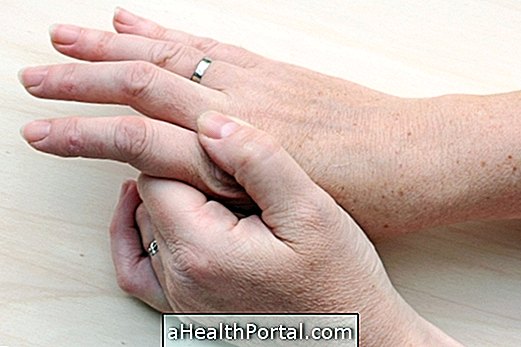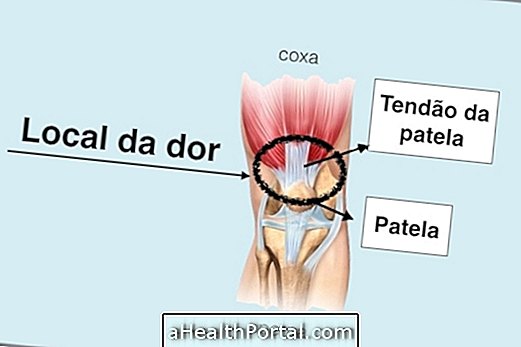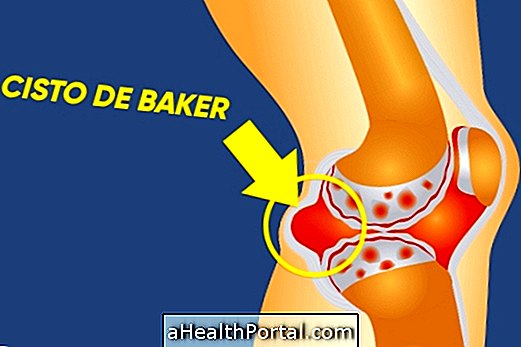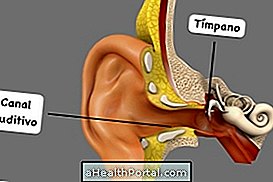Hip arthroplasty is an orthopedic surgery used to replace the natural hip joint with a metal, polyethylene or ceramic prosthesis.
Generally, hip arthroplasty is used in elderly patients with joint wear, due to osteoarthritis, rheumatoid arthritis or ankylosing spondylitis; however, it may also be used in young patients if a femoral neck fracture occurs, for example.
Hip arthroplasty has some risks and is therefore only used as a last resort when analgesics, anti-inflammatories and physiotherapy no longer help relieve hip pain.
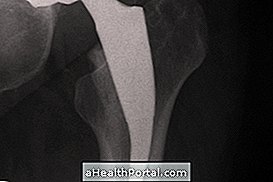

Physiotherapy after placement of hip prosthesis
Physical therapy for hip arthroplasty should begin the first day after surgery and is important for relieving pain, reducing swelling, improving hip movements, and strengthening muscles.
Normally, the physiotherapy program for the hip prosthesis should be guided by a physiotherapist and include exercises to learn how to walk with the prosthesis, to strengthen the muscles and to develop balance.
Upon discharge from the hospital, the patient should maintain physical therapy at home or in a clinic up to 6 months postoperatively for hip arthroplasty.
Here's how to do the exercises in: Physical therapy after hip prosthesis.
Care after placing a hip prosthesis
The recovery of the hip arthroplasty lasts about 6 months and during this period the patient should have some care, such as:
- Lie on your stomach with your legs spread;
- Do not cross your legs;
- Avoid turning the operated leg in or out on itself;
- Do not sit in very low places: always place seats to elevate the toilet and chairs;
- Avoid lying on the side of the operated leg, especially in the first month after surgery;
- When climbing stairs, you must first put the leg not operated and then the operated one. To descend, first the operated leg and then the not operated one;
- Practice light activities, such as walking or dancing, after 2 months of recovery and under the guidance of the doctor or physiotherapist.
Learn more at: How to speed recovery after hip replacement.
Generally, the patient should go to a revision appointment 7 to 10 days after surgery to remove the stitches and miss some complications, such as dislocation of the prosthesis or infection.
After the first consultation visit, the patient should consult the orthopedist every 2 years to have an x-ray and evaluate the positioning and wear of the prosthesis. Usually, the prosthesis only needs to be changed after 25 years of moderate use, and can be changed early in young patients who do more intense activities.
Hip Arthroplasty Compilations
Some complications of hip arthroplasty may be:
- Prosthesis infection;
- Deep vein thrombosis;
- Pulmonary embolism;
- Disassembly of the prosthesis;
- Stretching or shortening of the leg.
Complications of arthroplasty are rare, especially when the patient follows the guidelines and appropriate care in the postoperative period of surgery.
When complications are suspected with the hip prosthesis, consult the orthopedist or go to the emergency room to start the appropriate treatment.
How is hip arthroplasty performed?
The hip arthroplasty surgery is done under anesthesia in the operating room, which can be a regional block or general anesthesia. The surgeon makes a cut on the side of the thigh, removes the parts worn by the arthrosis and places the hip prosthesis.
The duration of the surgery is approximately 2.5 hours, but may be longer, depending on the patient's condition. The hospitalization time may vary from 3 to 5 days and physical therapy should be started soon after the surgery.
The surgeon will usually recipe analgesic and anti-inflammatory drugs, such as Paracetamol or Ibuprofen, after surgery and while the patient has pains.
Useful link:
- Knee prosthesis
- Hip pain


